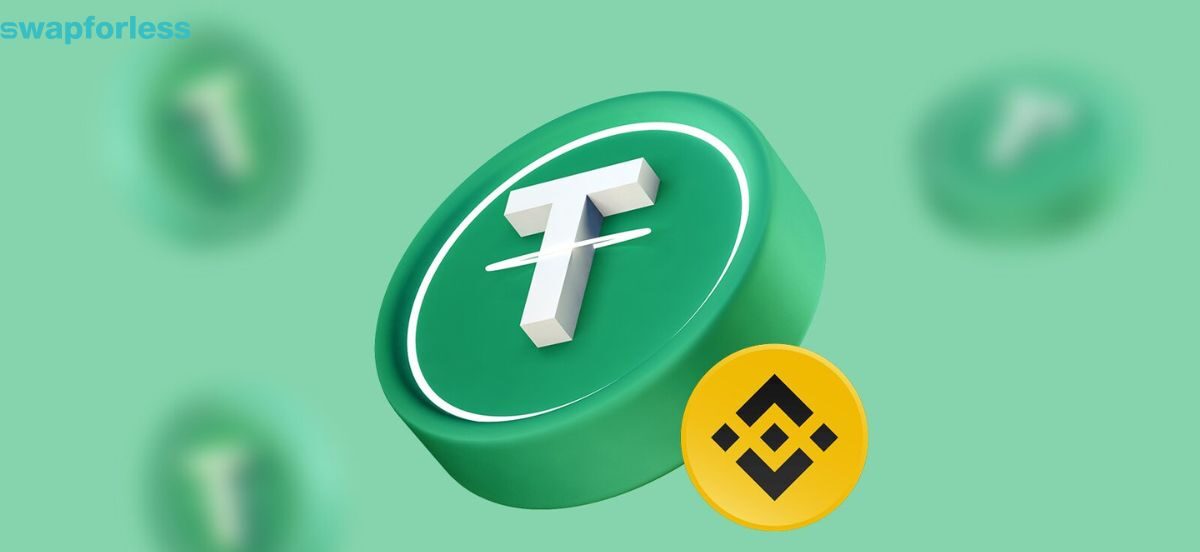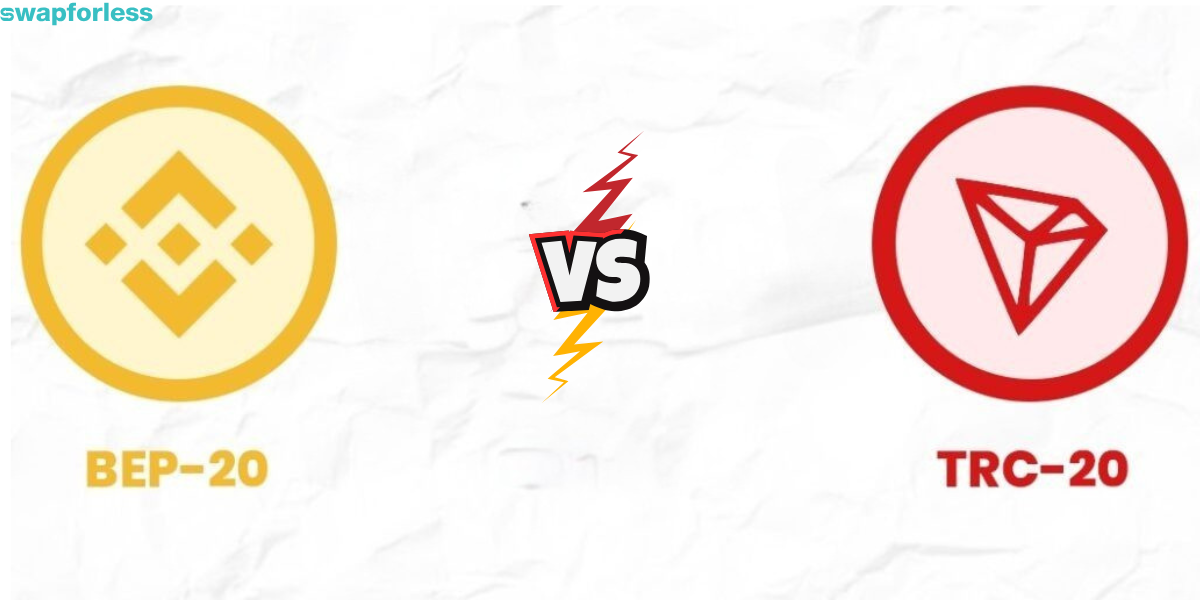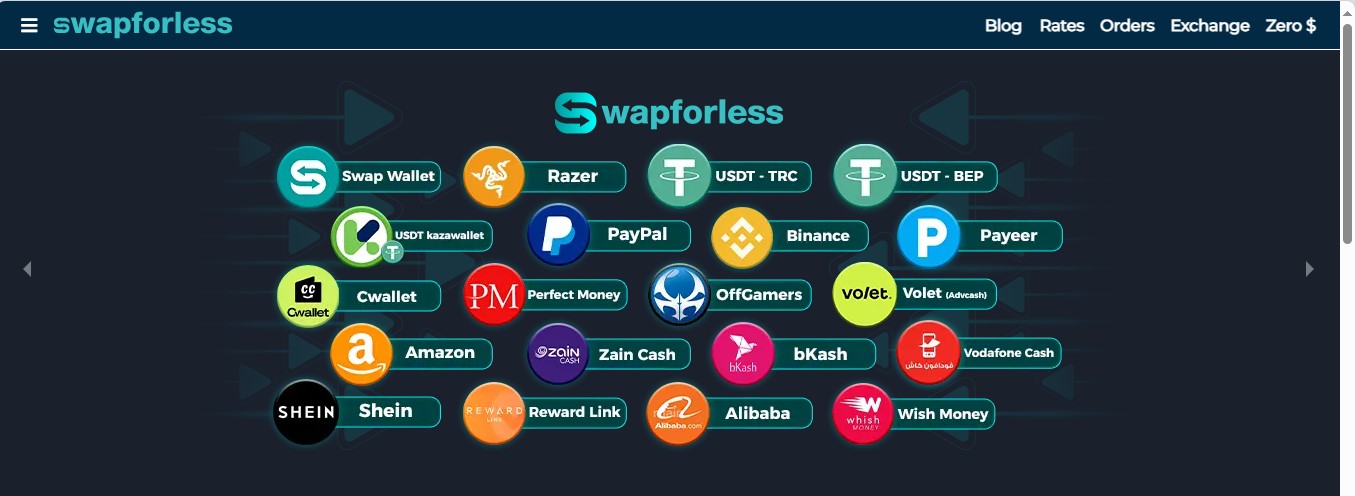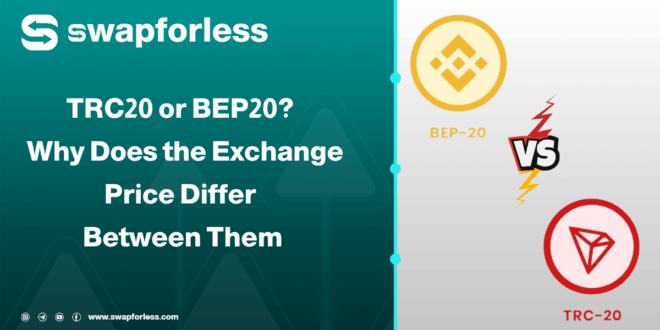When you’re about to exchange an asset for Tether (USDT), you get to the final step and find two options to receive your funds: one is TRC20, and the other is BEP20. You immediately notice a difference in the exchange price for each.
But why exchange price for USDT differ between TRC20 and BEP20? And is one definitely better than the other?
If these questions are on your mind, the answer isn’t complicated. TRC20 vs BEP20 lies in the fundamental design of each blockchain network, which directly leads to variations in speed and cost, explaining the price difference you see.
What is the TRC20 Network?

To understand TRC20, we first need to look at its parent network: Tron. This blockchain was designed from the ground up with one clear goal: to be incredibly efficient at processing a massive number of transactions at a near-zero cost.
For this reason, it has become the dominant global infrastructure for stablecoin transfers, particularly for USDT.
Key Features:
- High Speed: The Tron network is built to process thousands of transactions per second, making transfers nearly instantaneous.
- Extremely Low Fees: Tron is famous for its negligible fees. For most small to medium-sized transfers, the cost is often less than a single cent or sometimes even free.
What is the BEP20 Network?

Similarly, BEP20 is a token standard for addresses on the BNB Smart Chain (BSC), the network developed by the renowned Binance exchange.
Key Features:
- Excellent Speed: The BSC network rivals Tron’s speed, with transactions typically confirming in just a few seconds.
- Competitive Fees: Fees on the BSC network are also low compared to other networks like Ethereum, but they are paid in a small fraction of BNB. These fees usually amount to a few cents.
- Massive Ecosystem: The biggest advantage of the BEP20 network is its integration with the vast Binance ecosystem, including its Decentralized Finance (DeFi) applications, gaming platforms, and digital marketplaces.
TRC20 vs BEP20

To simplify things, here’s a table outlining the key differences that influence which network, TRC20 or BEP20, is better for you.
What is the USDT Exchange Price and Why is it Important?
The USDT exchange price is the final, net value you receive in your wallet after all fees and costs are deducted when converting a digital asset.
This applies whether you’re exchanging between different networks (like TRC20 and BEP20) or between different currencies.
This price isn’t just the market rate; it’s the end result that reflects network costs, platform liquidity, and any other service fees.
Why Exchange Price for USDT Differ Between TRC20 and BEP20?
The price difference you observe is a direct result of several behind-the-scenes factors, most importantly USDT transfer fees and platform policies.
- Fees: Fees increase the total cost of a transaction. Higher fees charged by a platform for a specific network translate into a less favorable exchange price for the user receiving the funds.
- Liquidity: Liquidity varies from one network to another. On exchange platforms, each network has its own liquidity pools that directly impact how much of the destination currency you receive for your original asset.
- Supply and Demand: If demand for using a specific network (like TRC20) for transfers or trades increases, the available liquidity in its pools may decrease. This can lead to a less favorable exchange price or higher fees due to the supply and demand imbalance.
- Network Congestion: The more traffic or congestion on a given network, the higher the transaction fees can become, which in turn reduces the actual amount you receive.
- Exchange Platform Policies: Each platform may set different profit margins or commissions on each network based on its own operational costs and demand. Therefore, you may find the exchange price differs simply based on the network you choose.
Which Should You Choose on Swapforless?

Now that we understand the technical differences, how should you choose a network when withdrawing USDT? You might notice that the service fee Swapforless charges for withdrawing USDT via TRC20 may be higher than the fee for withdrawing via BEP20.
Here, we need to distinguish between two types of fees:
- Network Fees: The technical cost the platform pays to the blockchain (in this case, TRC20 is cheaper).
- Service Fees: The commission the platform itself charges the user as part of its business policy.
Choose BEP20 if:
- Your primary goal on Swapforless is to receive the highest possible net amount in your wallet. Due to current service fee policies, the lower cost to the user results in a larger final amount.
- You specifically need the funds on the BNB Smart Chain to use them directly in DeFi apps or games and are willing to receive a slightly smaller net amount for that convenience.
Choose TRC20 if:
- If you absolutely need to receive the funds on the Tron network (for example, because your external wallet only supports TRC20) and you are willing to accept a slightly lower net amount due to the platform’s higher service fee.
Important Notice: When sending or receiving USDT, the sender’s network must match the receiver’s network. Sending USDT-TRC20 to a BEP20 address will likely result in the permanent loss of your funds.
Frequently Asked Questions (FAQ)
Is USDT TRC20 as secure as BEP20?
Yes, both are completely secure. Security depends on the robustness of their respective blockchains, and both Tron and BNB Smart Chain are strong and reliable networks.
Can I convert USDT from TRC20 to BEP20 later?
Yes, but this requires using cryptocurrency exchanges or specialized “bridges,” which usually involve additional fees. It is always better to choose the correct network from the start.
Are TRC20 fees always lower than BEP20 fees?
On a technical level, yes, the base network fee for TRC20 is typically lower. However, the final amount you pay depends on the service fees charged by the platform you are using, which can change the final outcome.
What happens if I send USDT to the wrong network?
In most cases, this will result in the permanent loss of your funds. There is no easy way to recover crypto sent to an incompatible blockchain network.
What is the cheapest way to withdraw USDT?
There is no fixed answer. The cheapest method depends entirely on the network and the service fee policy of the platform you are using at that specific moment. Popular options include wallets such as Kazawallet, which is one of the best USDT wallets
Is the BEP20 network faster than TRC20?
Both networks are extremely fast, processing transactions within a few seconds. For the average user making a transfer, there is no noticeable difference in speed between them.
Conclusion
You now have a clear answer to why exchange price for USDT differ between TRC20 and BEP20.
The choice between TRC20 vs BEP20 is a key factor that directly impacts the USDT exchange price and the final amount you receive.
 swapforless blog
swapforless blog



